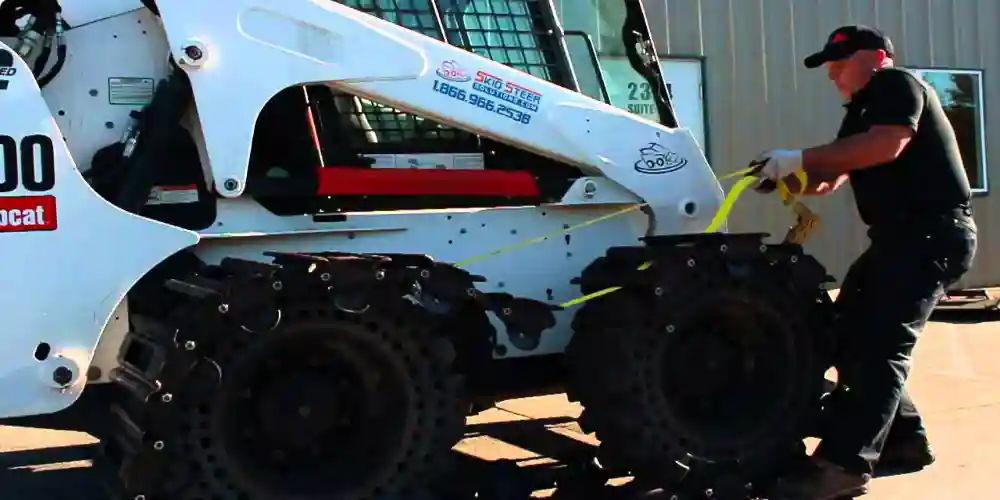
The Ultimate Guide to Installing Skid Steer Attachments
Skid steer attachments are work tools that enhance a skid steer’s capabilities. Each attachment is designed for a specific purpose. Make sure the attachment you select is compatible with your machine and has the correct hydraulic flow and pressure specifications.
There are many different kinds of skid steer attachments, from brooms that sweep the dirt off roads to dozer blades that level and grade surfaces for construction. This guide will teach you how to install and use these essential attachments.
1. Select the Right Attachment
Choosing an attachment that matches the specs and capacity of your skid steer will maximize its value and versatility. Adding an attachment that can do multiple jobs will save you money in the long run by eliminating the need to use additional compact equipment.
When you’re ready to switch work tools, make sure your skid steer is in a safe location with plenty of room to maneuver. Clear the hydraulic hoses of any debris like rocks, sticks, mud, or ice and inspect them for leaks. Check the attachment’s male and female couplers for a clicking sound when connected.
Contractors use a wide variety of https://theredbarnguy.com/skid-steer-attachments/ to do everything from mulching to digging and scooping. You can even use a rototiller to till and cultivate soil or a disc harrow to dig holes for fence posts.
2. Mounting the Attachment
A skid steer is a versatile workhorse that can transform into a backhoe, drill, mixer, tree grinder or whatever else you need. However, attachments that are not attached properly can cause the hydraulic system of your skid steer to overheat and damage vital parts.
When changing an attachment, ensure you are in a safe and spacious area with enough room to maneuver your machine. Make sure that the hoses and quick coupler are clean, free of rocks, sticks, debris, mud or snow.
Exit the cab and unlock levers or lift pins on the quick coupling plate to disconnect the attachment. Once disconnected, tilt the attachment downward and reverse the machine to remove it. Visually check that the levers or pins are retracted into the female coupler of the attachment.
3. Check the Hydraulic Connections
Ensure that the hydraulic connections from the attachment to the machine are connected correctly. This is especially important if you have quick attach attachments that require you to manually connect and disconnect hydraulic lines.
Before you start the attachment, check your surroundings to make sure no one is in danger of getting hit. Then, slowly reverse your skid steer to dismount it from the attachment. Lower the attachment so that its bottom is lying flat on the mounting plate, and then press the release button if you have a quick attach system.
Next, connect the hoses to each other by pushing them together. If you have a ‘connect under pressure’ coupling, remember to first release the system pressure stored in it by pushing the coupler toward the machine and holding it for five seconds.
4. Reverse the Attachment
Using a skid steer attachment can help you complete many different projects. It is important to follow proper maintenance protocols when working with your attachments.
For example, a fence post installer is designed to quickly and easily install fencing posts across large areas of land (our fence contractor customers love it). A mulcher or brush cutter can clear thick brush and vegetation like small trees and shrubs in Australia.
A steel track can improve the handling and traction of your skid steer when working on loose surfaces, especially sand, rocks, or mud. For a more specialized project, a stump grinder can be used to grind tree stumps into mulch. By following these tips, you can successfully use your skid steer attachments and increase the versatility of your tractor.
5. Secure the Attachment
A skid steer with the right attachments can increase its versatility and ability to take on a wide variety of tasks. Regular maintenance and care can help to decrease long-term wear, making it easier to operate the machine safely and effectively.
When changing out an attachment, it’s important to check the hydraulic connections to ensure they are secure. Powered quick couplers can be engaged by pressing a button in the cab or manually locked using levers. Changing out attachments in an area free of rocks, debris, dirt, mud or snow will help to prevent damage. It’s also essential to regularly clean hydraulic fittings along essential tubing to minimize residue buildup and optimize performance. This is an especially important step for high-flow auxiliary hydraulic systems that require a higher flow rate than standard.